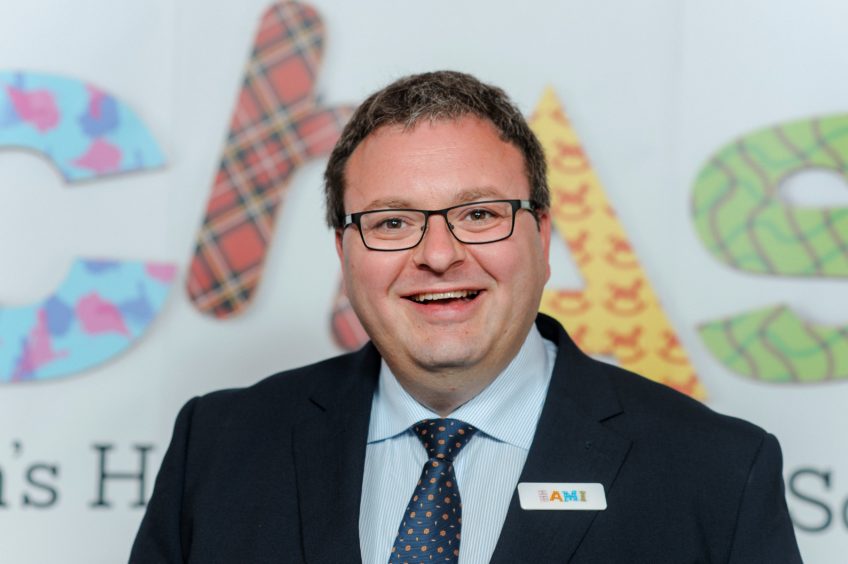The boss of a Scottish children’s charity has formed plans to increase the support available to north-east families with terminally ill children who have been living at the “hard end of hardship” during lockdown.
Rami Okasha, chief executive of Children’s Hospices Across Scotland (Chas), claims many families, already facing the death of their child due to life-shortening conditions, have “fallen between the cracks” with the end of shielding measures and are afraid to leave their home for fear the virus could be fatal to their child.
During lockdown, Chas has been providing more than double the care it normally would, through the delivery of prescriptions, shopping and nursing care.
It has also worked “hand in glove” with NHS Grampian’s children’s hospital, supplying senior nurses who specialise in life-shortening conditions.
Mr Okasha said: “Families often talk about the exhaustion and the terrifying heartbreak of knowing their child is going to die young.
“What we know is that there is a huge impact of parents who are often the primary carer for that child 24/7, who are exhausted.
“What we’re seeing across the city and shire are families who really need support to help them manage.
“During lockdown it was even harder for families and I fear it may be again.”
Chas has issued a new three-year plan outlining how it will aim to “reach every family in Scotland” by working with a wider range of partners including the NHS, councils, hospices, charities, government and volunteers.
One north-east mother whose child was diagnosed with rare genetic condition Tay-Sachs disease in 2017, said she must be her son’s “voice” in the fight to raise more awareness about the condition.
Children who suffer from Tay-Sachs disease often don’t live beyond 5 – and little Jayden turned four in March.
Lynn Easdale, who lives in Fraserburgh, said the Covid-19 lockdown has been “horrendous” for her and her son.
She called for help for families and increased support for Chas – who she called her “superheroes”.
“Every day is a blessing, as we know that one day Jayden’s little body will shut down”, Mrs Easdale said.
“That said, I’ll never give up on him and I’ve always said since his diagnosis that although there is no cure for my son, I’ll try and help as many other families as I can.”
Mrs Easdale, who is also mother to Kaitlin, 20, and son Connor, seven, says every day with her terminally ill son is marked as a “milestone” – with Jayden getting two birthdays each year.
She said: “When you first get the diagnosis you go through a grieving stage – understanding that you’re never going to see him walking and speaking.
“It’s a horrible thing that’s happening to Jayden, but he’s brought so many other people into our lives that we would never ever have met.
“The way that I’m preparing myself is that I take each day as it comes.
“We know that someday he is going to have to go and what we’ve now made more important is making memories with Jayden, as much as we can.”
Increasing number of kids with life-shortening conditions
New research from CHAS shows the number of babies, children and young people in Scotland living with a life-shortening condition is increasing.
Figures for Grampian show the total number of children to be 1759, while in the Highlands its 859, 57 in the Western Isles, and 65 in Shetland and 43 in Orkney.
The Children in Scotland Requiring Palliative Care (ChiSP3) report, commissioned by CHAS and delivered by Public Health Scotland, highlights that there are over 16,700 babies, children and young people (aged 0-21) across Scotland who are likely to die – and the number is increasing as more children live longer.
The report, which claims around 2,000 children are unstable, deteriorating or dying at any one time, also highlights that children with a life-shortening condition are 50% more likely to be living in a deprived area than an affluent one.
Mr Okasha said: “This is really driven by more children with very complex medical needs surviving for longer – which is wonderful.
“Whereas ten years ago some kids might only have lived for two or three years, they’re now living for four or five years thanks to the advancement of medicine.
“But what it brings with it is the need for more care for those kids and those families who are providing really intense care to really sick children who they know will die.”












